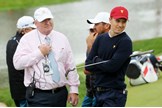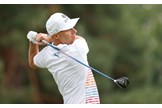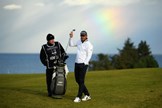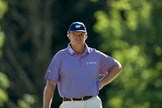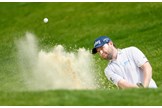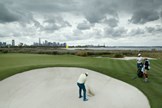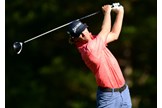Rules Refresher: 10 rules incidents in 2017 that you can learn from
Last updated:
Need a rules refresher? We’ve been reviewing the rules incidents of 2017!
It turns out that Dustin Johnson and Anna Nordqvist’s penalty drama at their respective US Open’s in 2016 wasn’t enough for the Tour Professionals to leave behind– as there was still a lot of rules incidents that either caused confusion or drama in 2017.
It doesn’t happen that often, but sometimes obscure rules or incidents prove the Pro’s don’t know the rules as well as they should, and find themselves penalised, disqualified or calling foul on themselves. In other cases, it’s a knowledge of the lesser-used rules that help players get out of tough situations.
Understandably, both of these instances are just another reason why the rules of golf are getting their big overhaul at the beginning of 2019. But just in case you encounter any of these situations between now and then, we’ve decided to give you a refresher course of some of the rules incidents of 2017. And there’s been quite a few that might have caused you to scratch your head at the time.
One notable exclusion is Jordan Spieth’s one-shot penalty drama on the 13th hole of Royal Birkdale. It’s already been well documented that he when he declared his ball unplayable he was allowed to take it back as far back on the line as he wanted (under Rule 28-b), and from there got relief from a the tour truck – which was a temporary immovable obstruction – under Rule 24-2. But although he proved his expertise there, there Presidents Cup showed even Spieth doesn’t always know the rules.
Jordan Spieth (Presidents Cup): Rule 1.2
The Incident:
During his match with Patrick Reed against Jason Day and Louis Oosthuizen, Spieth tried to silence the rowdy crowds by stopping Oosthuizen’s ball on the 13th green – which was thought to be no problem as Oosthuizen was clearly out of the hole. Instantly, the referee called Spieth over to tell him that because he had deliberately interfered with his opponent’s ball, it was an automatic disqualification from the hole because the ball had not stopped.
Spieth and Oosthuizen argued the common sense of the situation: Oothuizen’s ball had already passed the hole and was not going in, and Day’s birdie putt had already been conceded – but McFee ruled the hole had been conceded and Spieth and Reed could not try to tie the hole with their birdie putts. Day then tried to offer the 14th to the American duo and said they could just walk to the 15th, but Spieth said that if that was the rule they would play the rules. They went one down, but would win the next three holes to come back to defeat the Internationals 2&1.
The Rule:
Rule 1-2:
A player must not (i) take an action with the intent to influence the movement of a ball or (ii) alter physical conditions with the intent of affecting the playing of a hole.
Penalty For Breach Of Rule:
Match play – Loss of hole; Stroke play – Two strokes.
Anirban Lahiri (Presidents Cup): Rule 7.2
The Incident
Lahiri barely managed to get his third shot out of the bunker on the par-five second in his match with Charl Schwartzel, and given that Charley Hoffman had a three-foot putt for eagle, he was out of the hole. Afterwards, Lahiri brought the ball back in to the bunker to play a practice shot, and the rules official told him that you cannot practice a bunker shot even when the hole is finished – ending in disqualification from the hole.
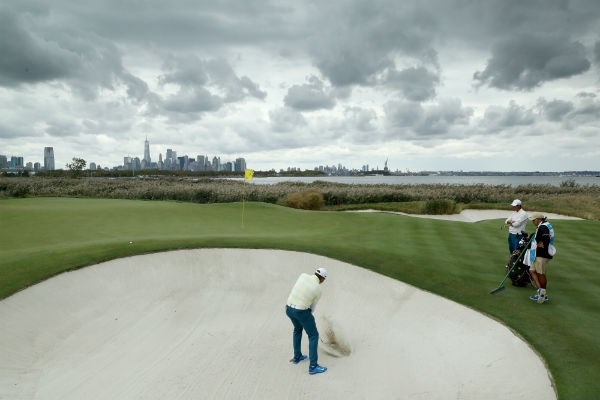
The Rule
Rule 7-2:
A player must not make a practice stroke during play of a hole. Between the play of two holes a player must not make a practice stroke, except that he may practise putting or chipping on or near:
a. the putting green of the hole last played,
b. any practice putting green, or
c. the teeing ground of the next hole to be played in the round, provided a practice stroke is not made from a hazard and does not unduly delay play ( Rule 6-7).
Penalty For Breach Of Rule:
Match play – Loss of hole
Ben Crane (Albertsons Boise Open): Rule 4-2
The Incident
Ben Crane was carrying a driver and a 6-iron in his bag which had decals stuck to them (stickers) that help launch monitors collect data – making them non-conforming clubs. He didn’t use the clubs during the tournament, but carrying them was enough to saddle him with two four-shot penalties.
He realised his mistake when he pulled out his driver on the 11th, and was assessed a four-shot penalty. He was given another four-shot penalty on the 14th when he informed them his six-iron had the same issue. He would have been disqualified if he had used either club.
The following day, he notified the rules officials that he had known the six iron had the decals when he had told them about the driver, and it was decided that because he hadn’t informed his playing partner or declared his club out of play – he was disqualified.
“Tournament golf is pretty challenging but it’s REALLY difficult when you’ve accumulated 12 strokes before hitting your second tee shot,” Crane wrote on Twitter.
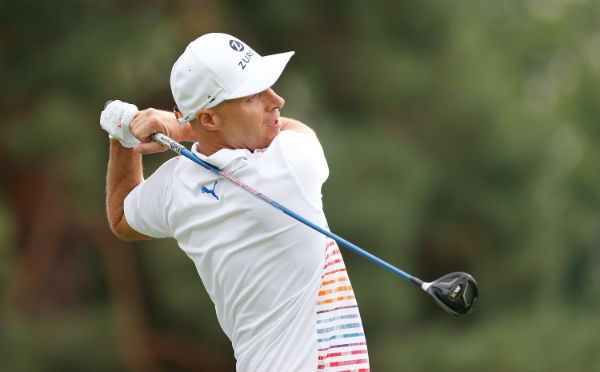
The Rule
Rule 4-2:
(a)During a stipulated round, the playing characteristics of a club must not be purposely changed by adjustment or by any other means.
(b) Foreign material must not be applied to the club face for the purpose of influencing the movement of the ball.
Penalty For Breach Of Rule:
*penalty for carrying, but not making stroke with, club or clubs in breach of rule 4-1 or 4-2: Stroke play – Two strokes for each hole at which any breach occurred; maximum penalty per round – Four strokes (two strokes at each of the first two holes at which any breach occurred).
*Any club or clubs carried in breach of Rule 4-1 or 4-2 must be declared out of play by the player to his opponent in match play or his marker or a fellow-competitor in stroke play immediately upon discovery that a breach has occurred. If the player fails to do so, he is disqualified.
Matthew Southgate (Web.Com Finals): Rule 19.1
The Incident
Matthew Southgate suffered a devastating four-shot penalty during the WEB.COM Tour finals – all down to a leaf. He hit his birdie putt on the 15th green at Beachwood in Ohio when a leaf blew across his line and bizarrely deflected his ball wide of the hole. He tapped in for par, and signed his scorecard for what he thought was his correct score.
According to the rules, Southgate should have replaced the ball to it’s original position with no penalty – but because he played the ball AND signed for the wrong scorecard, he was given a four-shot penalty, leading to a quadruple-bogey eight.
The Rule
Rule 19-1:
If a player’s ball in motion is accidentally deflected or stopped by any outside agency, it is a rub of the green there is no penalty and the ball must be played as it lies, except (b) If a player’s ball in motion after a stroke on the putting green is deflected or stopped by, or comes to rest in or on, any moving or animate outside agency, except a worm, insect or the like, the stroke is cancelled. The ball must be replaced and replayed. If the ball is not immediately recoverable, another ball may be substituted.
Penalty For Breach Of Rule:
Match play – Loss of hole; Stroke play – Two strokes.
Thorbjorn Olesen (BMW International): Rule 27.1
The Incident
It came from a very simple ruling. Olesen had found the water during the BMW International and needed to take a drop, but his first two drops ended back up in the water due to the severity of the slope where he was dropping – and therefore he was allowed to place the ball. Unfortunately, as Olesen stepped back up to the ball, it trickled back in to the water.
At the time, the rules official told him he could replace his ball without penalty – but just two holes later it was deemed that his ball was in fact in play when he had placed it, and therefore he needed to take a second penalty shot for ending up in the water. He wasn’t pleased.

The Rule(s)
Rule 26-1:
If a ball is found in the water hazard or if it is known or virtually certain that a ball that has not been found is in the water hazard (whether the ball lies in water or not), the player may under penalty of one stroke:
(c). As additional options available only if the ball last crossed the margin of a lateral water hazard, drop a ball outside the water hazard within two club-lengths of and not nearer the hole than (i) the point where the original ball last crossed the margin of the water hazard or (ii) a point on the opposite margin of the water hazard equidistant from the hole.
Rule 20-4:
If the player’s ball in play has been lifted, it is again in play when dropped or placed. A ball that has been replaced is in play whether or not the ball-marker has been removed.
Willy Wilcox (Wells Fargo Championship): Rule 4.4
The Incident:
Wilcox was three over with five holes to play during his second round at Wells Fargo before Friday’s play was called and meant he had to return during Saturday. He changed putters overnight, which took him over the 14-club maximum in his bag. He realised his mistake and notified a rules official, who told him he was disqualified.
After a series of tweets he was called to say it was actually a four-shot penalty, which would have meant he was five off the cut-line with four to play. Difficult a task that would have been, Wilcox had already left the tournament – and instead it would go down as a WD.

The Rule
Rule 4-4(a):
The player must not start a stipulated round with more than fourteen clubs. He is limited to the clubs thus selected for that round, except that if he started with fewer than fourteen clubs, he may add any number, provided his total number does not exceed fourteen.
Penalty for breach of rule 4-4a Regardless of number of excess clubs carried:
Stroke play – Two strokes for each hole at which any breach occurred; maximum penalty per round – Four strokes (two strokes at each of the first two holes at which any breach occurred).
Ernie Els (BMW PGA Championship): Rule 13-2
The Incident
Ernie Els found himself with a badly plugged lie (not dissimilar to Branden Grace) at the very same tournament. Able to see if he was allowed relief, Els was able to mark and lift the ball. However, on realising he wasn’t able to take any relief, he placed the ball back in to the same spot – as close as he could.
Els played a wonderful shot, but he felt that his original lie wouldn’t have allowed to play such a clean shot – and therefore called a two-shot penalty on himself for improving his lie. Of course it was accidental, but he admitted he must have not put it in exactly the right spot and therefore improved his lie – and couldn’t live with himself without penalty.

The Rule
Rule 13-2:
A player must not improve or allow to be improved: – The position or lie of his ball, – The area of his intended stance – His line of play or a reasonable extension of that beyond the hole – The area in which he to drop or place a ball
Penalty for breach of rule
Match play – Loss of hole; Stroke play – Two strokes.
David Howell (Alfred Dunhill Links): Rule 11-4 (b)
The Incident
It’s one of the most well-known rules in golf, but simple mistakes can still be made – and it was Howell’s caddie (who was out with Howell for the very first time) who notified his player of his mistake at the Dunhill Links. The former Ryder Cup player had been on final hole when his caddie noticed he had teed up in front of the markers – and although it was caused by confusion, it still meant a double-bogey rather than a par thanks to a two-shot penalty.
Howell tweeted “My Caddy noticed I’d teed up in front of tee marker on 18 today, 2 shot penalty, 1st day with me, honest as the day is long”
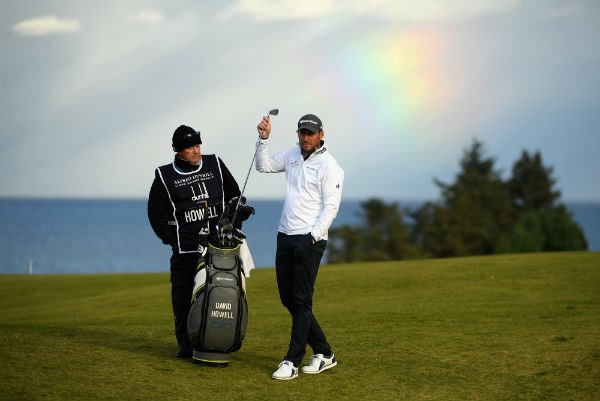
The Rule:
Rule 11-4 (b). Stroke Play
If a competitor, when starting a hole, plays a ball from outside the teeing ground, he incurs a penalty of two strokes and must then play a ball from within the teeing ground
If the competitor makes a stroke from the next teeing ground without first correcting his mistake or, in the case of the last hole of the round, leaves the putting green without first declaring his intention to correct his mistake, he is disqualified.
The stroke from outside the teeing ground and any subsequent strokes by the competitor on the hole prior to his correction of the mistake do not count in his score.
Branden Grace (BMW PGA Championship): Rule 25-1(b)
The Incident
In this case, no penalty was given – but it’s a good example of a rule you might not have known! The co-leader was staring at a deeply embedded ball plugged in the sand on the par-four 12th hole, but Grace realised that he was in a similar position to a rule he had in China in 2016.
Because his feet were touching the netting beneath the sand, it was ruled that he was able to drop the ball. There were many people that called Grace out for what they said were his manipulation of the rules by digging his feet in as far as they could go – but the result was a far more favourable lie than the one he had. He got out, but missed the par putt.
The Rule
25-1(a) Interference:
Interference by an abnormal ground condition occurs when a ball lies in or touches the condition or when the condition interferes with the player’s stance or the area of his intended swing. If the player’s ball lies on the putting green , interference also occurs if an abnormal ground condition on the putting green intervenes on his line of putt. Otherwise, intervention on the line of play is not, of itself, interference under this Rule.
Rule 25-1(b). Relief:
Except when the ball is in a water hazard or a lateral water hazard, a player may take relief from interference by an abnormal ground condition as follows:
(i) Through the Green: If the ball lies through the green, the player must lift the ball and drop it, without penalty, within one club-length of and not nearer the hole than the nearest point of relief. The nearest point of relief must not be in a hazard or on a putting green. When the ball is dropped within one club-length of the nearest point of relief, the ball must first strike a part of the course at a spot that avoids interference by the condition and is not in a hazard and not on a putting green.
(ii) In a Bunker: If the ball is in a bunker, the player must lift the ball and drop it either:
(a) Without penalty, in accordance with Clause (i) above, except that the nearest point of relief must be in the bunker and the ball must be dropped in the bunker or, if complete relief is impossible, as near as possible to the spot where the ball lay, but not nearer the hole, on a part of the course in the bunker that affords maximum available relief from the condition; or
Lexi Thompson (ANA Inspiration): Rule 20-7
The Incident
It was the most controversial ruling of the year – and it caused a change in the rules of trial by television. Lexi had a short putt on the 17th hole on Saturday, marked it and replaced it – and made the putt. She finished her round as leader of the first major of the year, but it wasn’t to last.
A television viewer had alerted the LPGA on Sunday that the American had marked her ball then replaced it in the wrong place on the 17th hole a day earlier, they reviewed it and judged she had incorrectly replaced her ball – therefore playing the ball from the wrong place – which cost her two shots for the breach and another two for signing an incorrect scorecard. She ended up losing in a play-off, causing a lot of outrage.
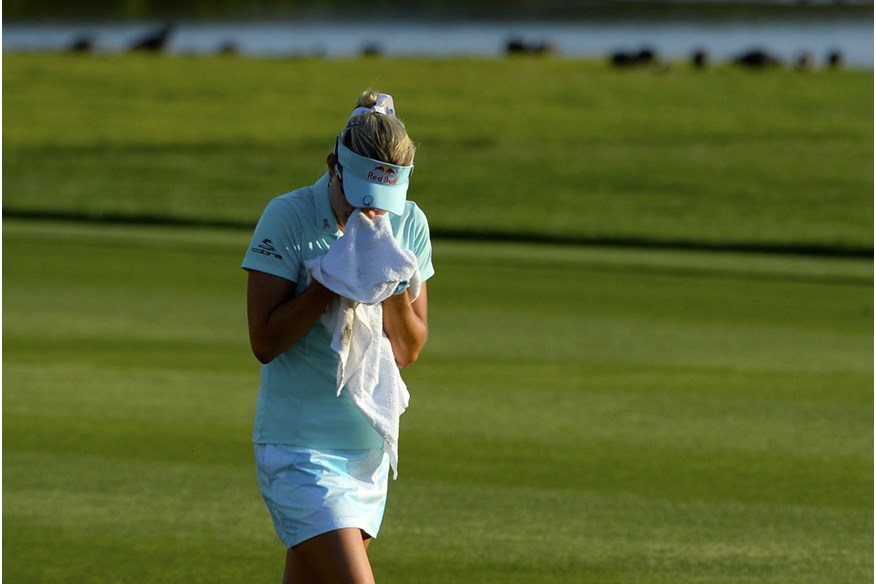
The Rule
Rule 20-7 (c): Strokeplay
If a competitor makes a stroke from a wrong place, he incurs a penalty of two strokes under the applicable Rule. He must play out the hole with the ball played from the wrong place, without correcting his error, provided he has not committed a serious breach.
Rule 6-6 (d): Wrong Score for Hole
The competitor is responsible for the correctness of the score recorded for each hole on his score card. If he returns a score for any hole lower than actually taken, he is disqualified. If he returns a score for any hole higher than actually taken, the score as returned stands.
Exception: If a competitor returns a score for any hole lower than actually taken due to failure to include one or more penalty strokes that, before returning his score card, he did not know he had incurred, he is not disqualified. In such circumstances, the competitor incurs the penalty prescribed by the applicable Rule and an additional penalty of two strokes for each hole at which the competitor has committed a breach of Rule 6-6d. This Exception does not apply when the applicable penalty is disqualification from the competition.
– Because of this incident, the R&A and USGA issued a new rule on the use of video evidence being used in competition. Read about it here

